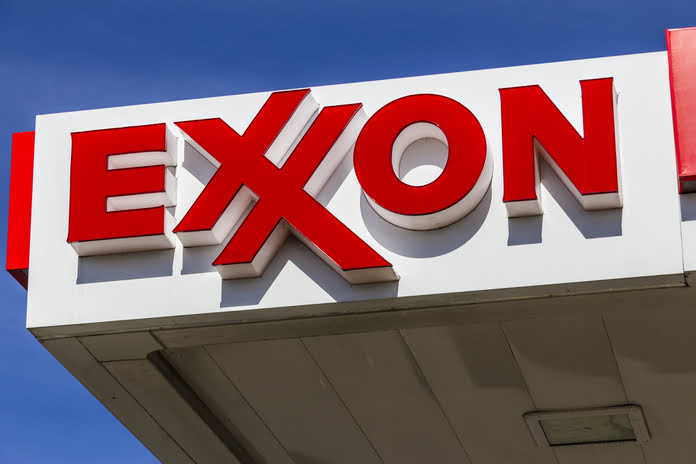Exxon Mobil Corporation (NYSE:XOM) is a stock with a hefty dividend yield. The energy company offers investors significant capital appreciation upside and income generation possibilities in the face of massive inflationary pressures, supply chain difficulties, and geopolitical risks. It will expand on that note by highlighting several major recent developments and why they are relevant for the oil giant.
Energy Markets Overview
Exxon Mobil announced in March 2022 that it would abandon its Russian investments, resulting in a relatively minor impairment. We recognize that the company’s direct exposure to Russia is limited.
According to data published by the International Energy Agency, after the oil price crash of 2015-2020, investment in upstream operations (those involved in extracting raw energy resources from the earth) dried up. Even today, global upstream investment levels remain rather small compared to where energy prices are currently trading, as recently reported by the research firm Wood Mackenzie.
Natural gas liquids (“NGLs”) prices, such as propane, butane, and ethane, are rising in tandem with crude oil prices. NGLs are frequently sold as a proportion of WTI or Brent (the leading oil pricing benchmarks). In short, a combination of global energy demand rebounding sharply from the depths of the COVID-19 pandemic, subdued investment in upstream activities between 2015 and 2020, disruptions caused by major geopolitical events, and the OPEC+ group’s commitment to its ongoing supply curtailment agreement have created a perfect storm for elevated raw energy resource pricing.
Exxon Mobil’s Earnings Update
Exxon Mobil released second-quarter 2022 results on July 29 that exceeded consensus top- and bottom-line projections. Exxon Mobil reported $115.7 billion in “total revenues and other income” in the fourth quarter, a 71% increase yearly. Its oil and gas output increased by 2% year on year to 3.6 million net barrels of oil equivalent per day. It was up 4% when exceptional items were removed. Its operations in Guyana and the Permian Basin were critical in achieving this upstream production increase. Over the coming decade, they will continue to be two of the company’s top oil and gas production growth drivers.
The energy behemoth stated that “crude realizations improved 15% and gas realizations increased 23% compared to the first quarter, driven by tight supply,” helping to boost adjusted earnings at its Upstream business reporting segment to $11.1 billion in the second quarter of 2022 from $3.2 billion in the same period in 2021. While oil prices have recently risen, Exxon Mobil’s Upstream division should remain extremely profitable in the current market.
Last quarter, Exxon Mobil’s Chemical Products business reporting segment earned $1.1 billion in adjusted earnings, down from $2.2 billion in the same period in 2021. Foreign currency headwinds and lower petrochemical product margins weighed on this segment’s financial performance in the second quarter.
In the fourth quarter, Exxon Mobil’s GAAP and non-GAAP adjusted diluted EPS were $4.21 and $4.14, respectively, increasing over fourfold year over year. It improved its upstream and refining activities more than offset deterioration in its petrochemical operations. The company made $17.9 billion in GAAP net income in the second quarter of 2022, nearly four times what it did the previous year.
Exxon Mobil’s financial performance should continue to impress in the current climate. The natural energy resource pricing prognosis remains robust, and crack spreads have been relatively good recently.
Financial Strength Grows
Exxon Mobil is limiting its capital expenditures compared to its huge net operating cash flow generation capabilities to generate free cash flow in the current climate. During Exxon Mobil’s most recent earnings call, management reiterated the company’s capital expenditure guidance of $21-$24 billion for 2022. Exxon Mobil earned $27.0 billion in free cash flow (defined here as net operating cash flow fewer capital expenditures) during the first half of 2022 and spent $7.6 billion meeting its total payout commitments, with another $6.0 billion spent on stock repurchases.
Since the end of December 2020, Exxon Mobil has been rapidly rebuilding its financial sheet, supported by the global energy complex staging a remarkable resurgence beginning in early 2021. Exxon Mobil had $63.8 billion in net debt (including short-term debt) at the end of December 2020, which had decreased to $28.0 billion by the end of June 2022. Exxon Mobil has enough liquidity to cover its near-term financial needs, as it had $18.9 billion in cash and cash equivalents on hand at the end of the second quarter of this year. We have always admired Exxon Mobil’s previous deleveraging initiatives.
Our fair value estimate for Exxon Mobil is $105 per share, determined from our enterprise cash flow process (please see the above image), with the top end of our fair value estimate range sitting at $136 per share. We like Exxon Mobil’s share repurchases since, in our opinion, XOM shares are trading significantly below their intrinsic value as of this writing, last changing hands at $90 per share.
Fundamentally, we believe that companies with a solid net cash position on the balance sheet and a large amount of free cash flow are better positioned to pay and raise their dividend over time. In our opinion, firms that are buried under a pile of debt and do not adequately cover their dividend with free cash flow are more vulnerable to a dividend cut or a stoppage of growth. Generally, the bigger the “blue bar” to the right, the more durable a company’s dividend; conversely, the greater the “blue bar” to the right, the less durable a company’s dividend. In our opinion, Exxon Mobil’s dividend health is sound.
Concluding Thoughts
Exxon Mobil is a fantastic company and one of the greatest in the energy industry. While energy prices have just fallen moderately from a high base, Exxon Mobil will continue to be a free cash flow cow in the current environment. The company’s dividend growth runway is still intact, and its capital appreciation upside is fairly substantial.
Featured Image: Megapixl @Jetcityimage

















